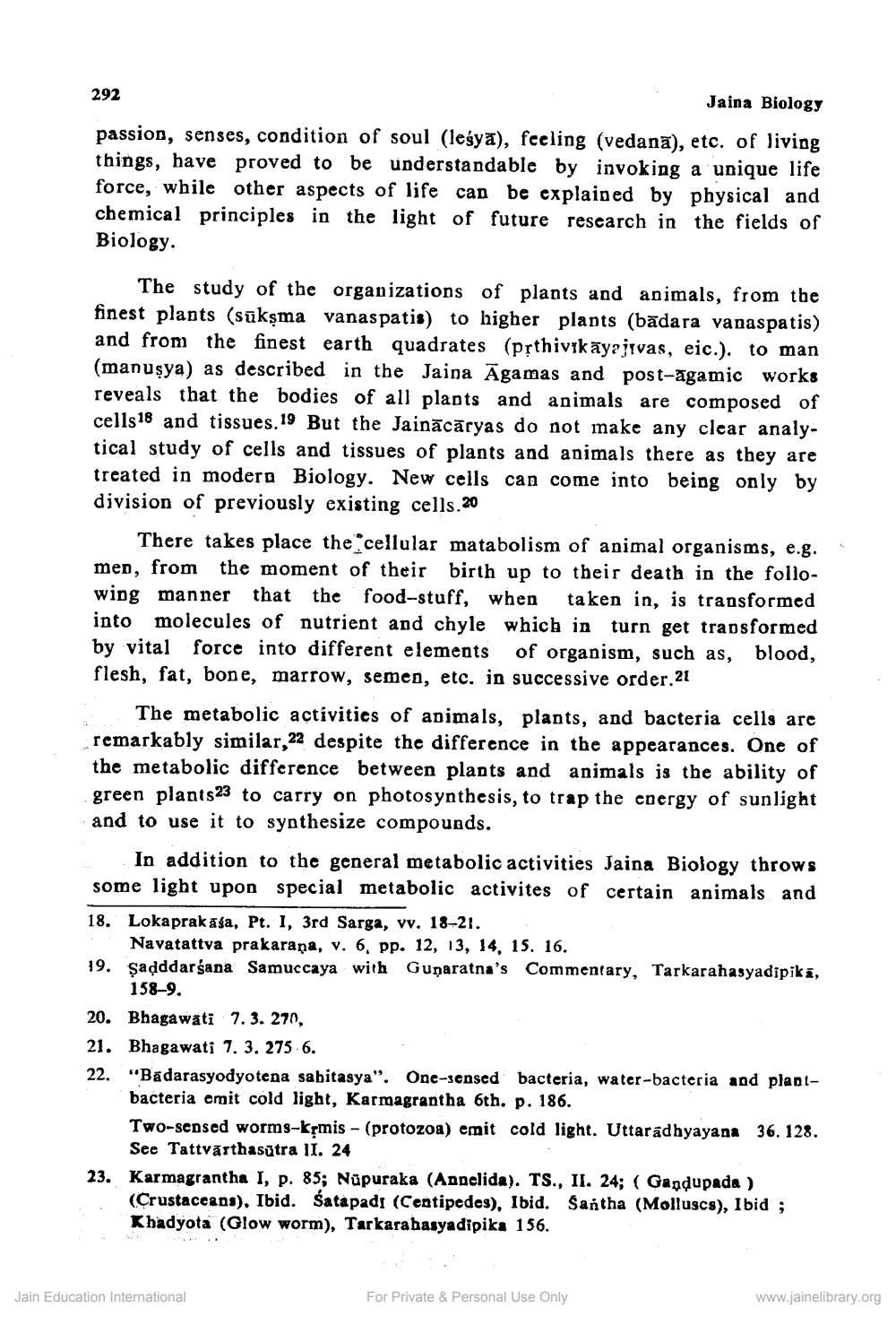________________
292
Jaina Biology
passion, senses, condition of soul (leśyā), feeling (vedanā), etc. of living things, have proved to be understandable by invoking a unique life force, while other aspects of life can be explained by physical and chemical principles in the light of future research in the fields of Biology.
The study of the organizations of plants and animals, from the finest plants (sūkşma vanaspatis) to higher plants (bādara vanaspatis) and from the finest earth quadrates (prthivykāyajtvas, eic.). to man (manuşya) as described in the Jaina Āgamas and post-agamic works reveals that the bodies of all plants and animals are composed of cells 18 and tissues. 19 But the Jainācāryas do not make any clear analytical study of cells and tissues of plants and animals there as they are treated in modern Biology. New cells can come into being only by division of previously existing cells.20
There takes place the cellular matabolism of animal organisms, e.g.. men, from the moment of their birth up to their death in the following manner that the food-stuff, when taken in, is transformed into molecules of nutrient and chyle which in turn get transformed by vital force into different elements of organism, such as, blood, flesh, fat, bone, marrow, semen, etc. in successive order. 21
The metabolic activities of animals, plants, and bacteria cells are remarkably similar,22 despite the difference in the appearances. One of the metabolic difference between plants and animals is the ability of green plants23 to carry on photosynthesis, to trap the energy of sunlight and to use it to synthesize compounds.
In addition to the general metabolic activities Jaina Biology throws some light upon special metabolic activites of certain animals and 18. Lokaprakasa, Pt. I, 3rd Sarga, vv. 18-21.
Navatattva prakarana, v. 6, pp. 12, 13, 14, 15. 16. 19. sadddarsana Samuccaya with Gunaratna's Commentary, Tarkarahasyadipikā,
158-9. 20. Bhagawati 7.3. 270, 21. Bhagawati 1. 3. 275 6. 22. "Badarasyodyotena sabitasya". One-sensed bacteria, water-bacteria and plant
bacteria emit cold light, Karmagrantha 6th. p. 186. Two-sensed worms-Kemis - (protozoa) emit cold light. Uttaradhyayana 36. 128.
See Tattvārthasūtra II. 24 23. Karmagrantha I, p. 85; Nūpuraka (Annelida). TS., II. 24; ( Gandupada )
(Crustaceans), Ibid. śatapadi (Centipedes), Ibid. Santha (Molluscs), Ibid ; Khadyota (Glow worm), Tarkarahasyadipika 156.
Jain Education International
For Private & Personal Use Only
www.jainelibrary.org




